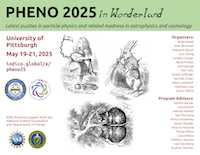Speaker
Description
In quantum computing, non-stabilizerness -- the magic -- refers to the computational advantage of certain quantum states over classical computers and is an essential ingredient for universal quantum computation. Employing the second order stabilizer R\'enyi entropy to quantify magic, we study the production of magic states in Quantum Electrodynamics (QED) via 2-to-2 scattering processes involving electrons and muons. Considering all 60 stabilizer initial states, which have zero magic, the angular dependence of magic produced in the final states is governed by only a few patterns, both in the non-relativistic and the ultra-relativistic limits. Some processes, such as the low-energy $e^-\mu^-\to e^-\mu^-$ and Bhabha scattering $e^-e^+\to e^-e^+$, do not generate magic at all. In most cases the largest magic generated is significantly less than the maximal possible value of $\log (16/7) \approx 0.827$. The only instance where QED is able to generate maximal magic is the low-energy $\mu^-\mu^+\to e^-e^+$, in the limit $m_e/m_\mu \to 0$, which is well approximated in nature. Our results suggest QED, although capable of producing maximally entangled states easily, may not be an efficient mechanism for generating quantum advantages.

